Ferrari Dino 246 1970
General description :
1970 Dino 246 GT Dino L Series
Chassis No. – 00522
Engine No. – 135c000 0006901
Transmission No. – M-216
Exterior Color – Russo Rubino (20-R-350)
Interior Color – Nero Leather with Red Daytona Inserts
Engine – 2.4-liter transverse mounted 6-cylinder
Transmission – 5-speed manual transaxle
Current Kilometers – 20,988 Kilometers (TMU)
Highlights for this car
- One of 355 L Series Dinos built from 1969-1970
- Restored in factory ordered Russo Rubino with Nero Interior
- Correct Cromodora Knock-Off Wheels, Wood Steering Wheel, and Alloy Body Features
General Overview
Designed by the legendary Leonardo Fioravanti, responsible for some of the greatest Ferrari designs while at Pininfarina, the original 206 Dino GT was a delightful design combining a curvaceous body and innovative performance engineering inspired by racing successes Ferrari had achieved with their mid-engine prototypes. The heart of the Dino was the compact 65-degree V6 engine displacing 1987cc. With triple Weber 40DCF carburetors, the engine offered 160hp, a potent amount for a lightweight two-liter car. The transverse mid-engine design mated with a 5-speed transaxle offered spirited acceleration, besting many larger displacement competitors.
Attributed in name to the tragically lost Dino Ferrari, son of Enzo, the Dino brand would launch Ferrari into higher volume production and world-wide acclaim with this affordable offering. Shortly after release, the 206 advanced to the larger displacement 246 Dino GT as public demand grew and production output increased for the mid-engine car. The 246, stamped in steel using higher volume practices, would become one of the most popular sports cars of the period. Europe and America loved the sleek bodywork and nimble performance, responding with record sales and accolades with sustained popularity lasting more than 50 years after the Dino was first introduced.
Early production 246 Dinos are referred to as “L Series” cars, uniquely produced in 1969 and 1970, retaining as much of the original lines and features inspired by the 1965 Paris Salon 206 GT Speciale and Pininfarina 1966 Turin Salon Dino Berlinetta GT. Over the years, L Series examples have become more sought after due to their clean and pure body design, elegant detailing, and production rarity. Distinct L Series features include slimmer front and rear bumpers, an external boot lid release button, triple-ear knock-off wheels, wood-rim steering wheels, head rests mounted on the rear bulkhead, roll up window cranks, no air conditioning, and lightweight alloy doors, hood, and decklids. These features resulted in a lighter car overall with spirited acceleration in keeping with the original 1966 concept Salon Dino.
History of this L Series Dino
Delivered new to the first owner in Switzerland in October 1969, chassis number 00522 is one of 355 ‘L Series’ cars constructed during the period when the 246 Dino was transitioning production to higher volume all steel construction. Many of the desirable L Series features contribute to the rarity of these cars, but, at the time of delivery, the rarity of this sub-group of cars remained largely unknown to collectors. Over time, this series has become highly sought after.
Originally finished in the elegant and rare color Rosso Dino (20-R-350) the interior was trimmed in black vinyl (Nero 161) including the L Series rear bulkhead mounted headrests. Having arrived in North America by the 1970s, the car is known to have been in Texas through the 1970s and 1980s. In the 1980s, the engine reportedly dropped a valve, and the car was subsequently placed in dry storage awaiting necessary mechanical attention. The next owner purchased the car intending to repair it but was unable to complete the work. The car was then purchased by a well-known midwest Ferrari parts supplier and subsequently purchased by a collector in 2012 who commissioned a full restoration.
During the restoration, the owner was meticulous about locating the very best OEM or original parts as possible. Many of these components were purchased from expert Dino parts authorities including the former owner of the car. Parts purchases were well over $60,000, rebuild costs recorded at $50,000, with an additional $150,000 was spent on cosmetics. After more than three years in restoration, the completed car was offered at auction in 2017 and sold to the current owner. Under current owner care, the car was assigned to a restorer who wanted this Dino to achieve a Platinum award under Ferrari concours judging. Although this Dino was completed to a high level of finish, it has not been entered in concours judging.
General Condition
Today this Dino presents in excellent condition with a beautiful, smooth, and glossy paint surface. The paint has excellent coverage and depth, however there is minor paint bridging in selected areas. Overall, the finish has been properly detailed and professionally prepared both when it was restored and under the care of prior and current owners. The doors shut with a crisp latch and hold position flush to the body surfaces, though the passenger side lower door corner sits slightly proud of the body surface. Both the front lid, engine, and trunk lids open and close properly. The chrome trim is excellent overall on the top surfaces of the bumpers and the bumpers are mounted using correct hardware. The side view mirror, window molding, emblems, and badges are all in excellent condition. Glass lenses and turn indicator lenses are also in beautiful condition and properly detailed. The Cromodora wheels are correctly refinished and maintain excellent luster featuring correctly sized Michelin XWX radial tires. The wheels are mounted with single hub chrome plated triple ear center knockoffs, unique to the early L Series Dinos.
The black interior creates a subtle understated elegance against the exterior body color. Not only are the seating and door panel surfaces supple, clean, and nicely presented, the original early seating architecture featuring rear bulkhead suspended headrests and perimeter seat bolsters are beautifully finished with correct foam structure, solid stitching, and smooth coloration. Red and black Daytona seat inserts offer a further sporting touch to the interior. Carpeting, headliner, and side trim panels are in excellent condition as are the mouse fur dash color and black interior accents. The center console is very nicely presented with the 5-speed gated shift plate, signature Dino details, and correct electric switches. The delightful array of gauges located in the instrument binnacle is in excellent condition with bright numeric indication and white needles. The finishing touch is the warm-toned factory correct wood rim steering wheel featuring alloy spokes and a bright yellow Dino center emblem. In all, the desirable interior presents as a handsome pairing to this stunning L Series, making it the perfect partner to the curvaceous Pininfarina designed, Scaglietti coachbuilt body.
Under the hood, the transverse Dino V6 engine has been thoughtfully prepared and beautifully detailed with originality in mind. While a correct type engine for an early 246GT, the engine number appears to be from a batch just after this chassis number range, and one of the cylinder heads is a later series unit. The transmission number falls exactly in sequence to the chassis number and the remaining engine components are authentic to this series Dino. The earlier series raw alloy engine castings are honest, clean, and unpretentious, reflective of the mechanical beauty and natural casting finishes. The rear trunk area is nicely restored, and the front storage compartment features a full-sized spare tire with matching wheel, and a correct inner molded tub. The underside of the car is finished to a high level of detail, worthy of show presentation. No evidence of damage or structural compromise has been noted in the chassis and all suspension mounting points, suspension components, and exhaust are correct with correct hardware and mounting brackets.
Driving this Dino, one is reminded of the very pleasant balance achieved with the mid-engine layout and V6 power. The gearbox shifts smoothly, and power comes on strong in each gear, pulling through low rpms and delighting drivers with a wide powerband and delightful sounds particularly in the higher rev range. Braking and suspension are responsive for the era, modestly improved by a set of correctly sized Michelin XWX tires showing ample tread.
The 246 Dino GT-L offers many of the very best features of a vintage Ferrari while reminding anyone who appreciates a modern Ferrari that this is the modern sports car that established the formula for decades of future mid-engine Ferraris. With its stunning Pininfarina design, Scaglietti coachwork, beautiful color combination, rare one of 355 L Series production numbers, and nimble performance capability, this 246 Dino stands today as an enduring passionate Father’s salute to the vision of his young son Dino Ferrari - a rolling sculpture celebrating their mutual dedication to sports cars and a lasting legacy of uncompromising beauty.
Included with this 246 Dino
This Dino is accompanied by a jack, an assortment of tools, a knock off mallet, a wheel chock, and two fuse box covers.
1970 Ferrari Dino 246 is listed for sale on ClassicDigest in California by Fantasy Junction for $449500.
Car Facts
Car type : Car Make : Ferrari Model : Dino 246 Engine size : 2.4 Model Year : 1970 Sub type : Coupé Location : Emeryville Vehicle Registration : Normal
449500 $
Seller Information
Fantasy Junction
Fantasy Junction
+1 510 653 7555
Fantasy Junction
+1 510 653 7555
People who viewed this Ferrari Dino 246 also viewed similar Ferrari listed at ClassicDigest
Other cars listed for sale by this dealer
About Ferrari
The first Ferrari road car was the 125 S introduced in 1947 and powered by a 1.5 L V12 engine, right? Well it's not quite that simple, Ferrari did in fact produce e Tipo 815, in 1940. Tipo 815 was designed by ex-Alfa Romeo engineers Alberto Massimino and Vittorio Bellentani and by Enrico Nardi under Enzo's company but legal issues with the former associate Alfa Romeo prevented Ferrari from launching the Ferrari marque at that point.
Enzo did produce a series of fine road cars in the 50's and 60's but they were merely to finance his true passion racing, wheather GT/Sports car or Grand Prix. The 50's saw the birth of Ferrari's most memorable cars, 250 GTB (tour de France) 250 Testa Rossa, 250 GT swb just to name a few.
Under the surface tension was growing though. In November 1961 long-time sales manager Girolamo Gardini made an ultimatum to Enzo: if tensions continued, he would leave the company. As a result, Gardini was ousted, as well as Scuderia Ferrari manager Romolo Tavoni, chief engineer Carlo Chiti, experimental sports car development chief Giotto Bizzarrini, and a number of others who stood by them.
Without Chiti and Bizzarrini the development of what was to become the most quintessential Ferrari and today the world's most expensive car, 250 GTO, was at a pivoting point. 250 GTO project was saved by a young engineer Mauro Forghieri and long-time racing bodyman Sergio Scaglietti who stepped in and took over the program with known results.
In addition to 250 GTO, Ferrari launced such master pieces as 250 LM, 250P, 275 GTB, 365 GTB/4 "Daytona" during the the 60's
By the late 60's Ferrari's prototypes' success came to a sudden halt by a new competitor, GT40. Ford turned to Lola to produce a Ferrari beating long distance racer after Enzo had cut the deal off with Henry Ford II making the latter absolutely boil with fury. The collaboration between Ford and Lola created the mighty Ford GT40 that gave Ferrari some heavy hits in Le Mans 24 to come.
By the end of the 60's FIAT purchased 50% of the company, starting a development that has led to a new mass-produced era of Ferraris.
Whether you are selling or looking for a classic Ferrari www.classicdigest.com is the place to check out.
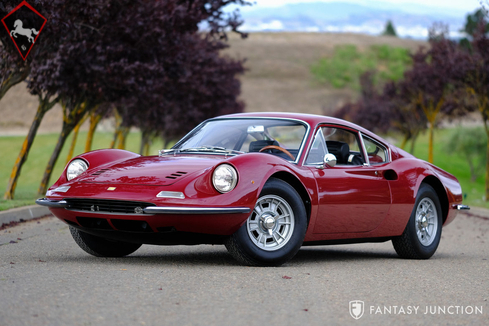















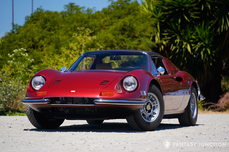
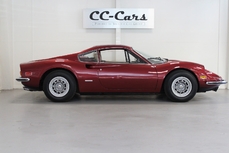
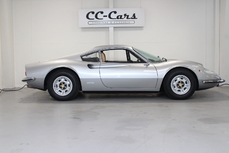
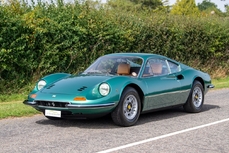
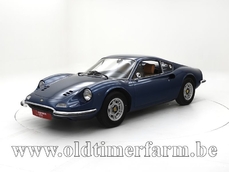
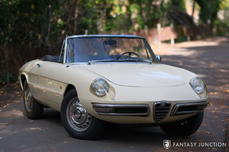
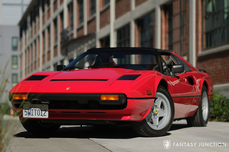
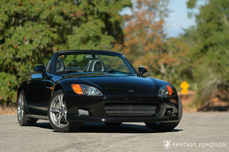
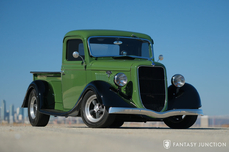
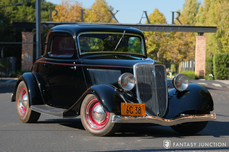

 vars & config
vars & config
 logs & msgs
logs & msgs 39
39 10442.4 KB
10442.4 KB 2265 ms
2265 ms



